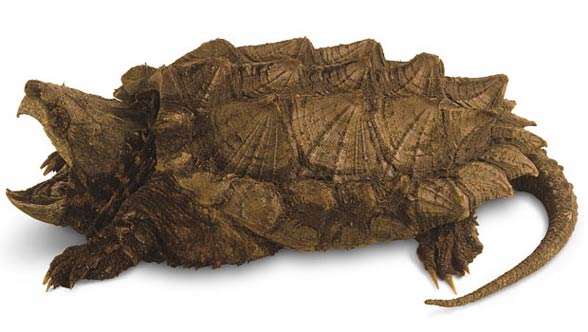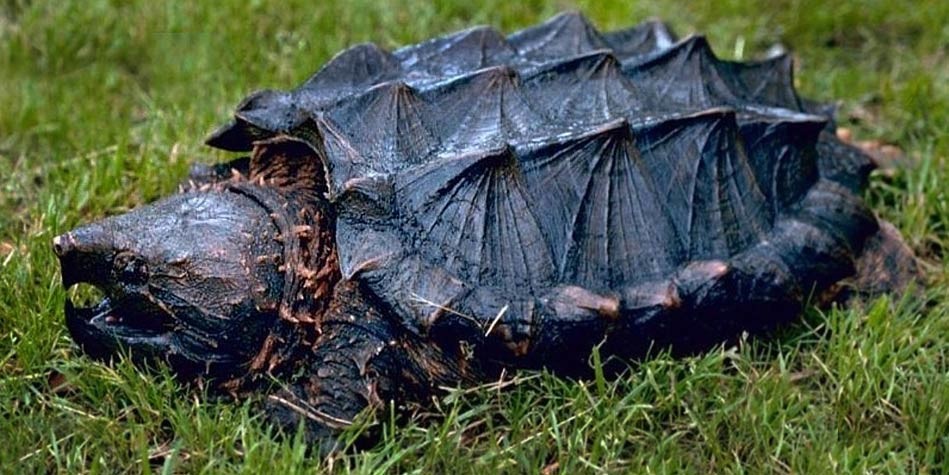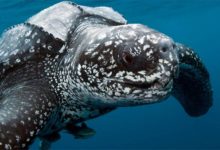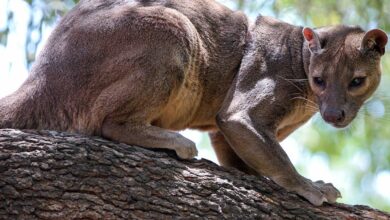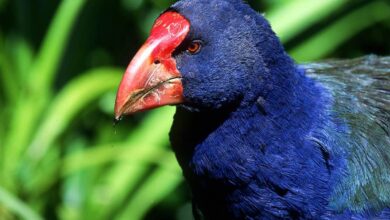Alligator snapping turtle (Macrochelys temminckii)
One of the largest freshwater turtles
The original and, therefore, unapproachable appearance stirs a strange fascination, which is better not to undergo – the alligator snapping turtle is a predator that can easily bite off a human finger with its strong jaws. Its bite force is larger than human’s – it is equal to over 160 kgf (353 lb). With its grim appearance it resembles a predatory reptile which inhabited our planet millions of years ago.
The alligator snapping turtle is one of the heaviest freshwater turtles and the largest one in North America.
Classification
- Kingdom: Animalia
- Phylum: Chordata
- Class: Reptilia
- Order: Testudines
- Family: Chelydridae
- Genus: Macrochelys
- Species: Macrochelys temminckii
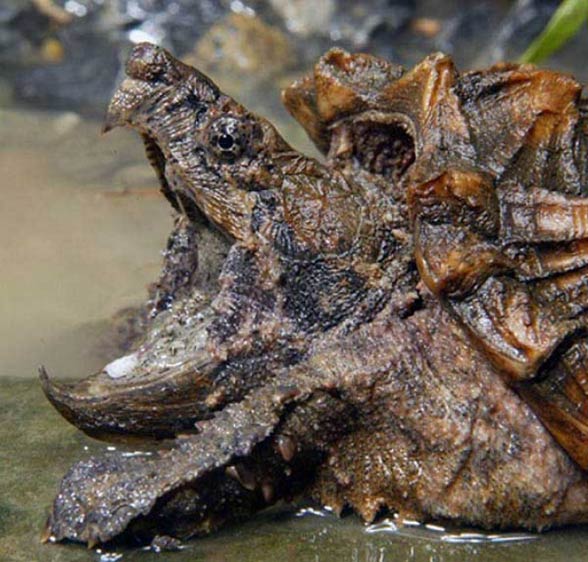
Areas of occurrence
The alligator snapping bone is endemic to the South-East USA. It inhabits the river systems, which means it often reaches the Gulf of Mexico.
Observed most commonly all the way from East Texas to eastern Florida and northern plus Northwest Kansas, Missouri as well as Southeast Iowa, West Illinois, South Indiana, West Kentucky and West Tennessee. Usually only the nesting females appear on open land areas – normally the turtles live in deep waters – in large rivers and ditches, lakes and swaps. The young and immature turtles prefer smaller streams.
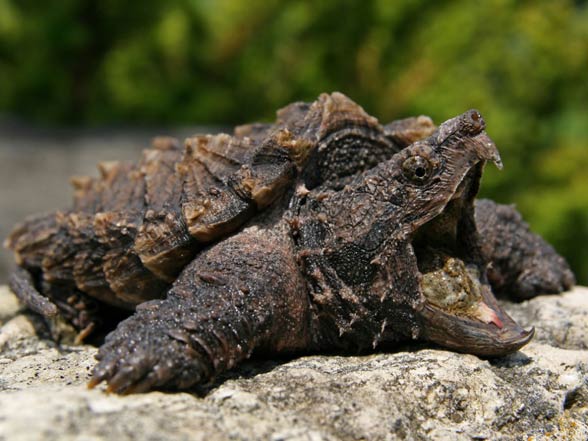
Characteristics
Appearance
It can hardly be confused with any other turtle species. It has a distinctive large, massive head and a carapace consisting of three rows of adamant, spiky plates giving the animal a primal, stark look that reminds some of the dinosaurs. The colors gray, brown, black, olive green are dominant; the shell itself is often covered in algae enhancing the camouflage capability. Yellow radial patterns are visible around the eyes – their role is to blur the eyes’ appearance to blend into the environment to stay hidden from potential prey. The head is covered with characteristic thread-like, fleshy ‘lashes’.
One of the largest turtles
One of the largest alligator snapping turtles living in captivity lived in John G. Shedd Aquarium in Chicago. The animal was 16 years old and weighed 113 kg (249 lb); in 1999 it was sent to aquarium in Tennessee for the hatching season, yet the reptile died on arrival. Another giant turtle located in Brookfield Zoo on the outskirts of Chicago reached 107 kg (236 lb)of weight, however such examples are nothing more than exceptions – usually the animal is not as big. The turtle becomes sexually mature after reaching 16 kg (35 lb) of weight and about 38 cm (15 in) of length, yet it may continue to grow nonetheless.
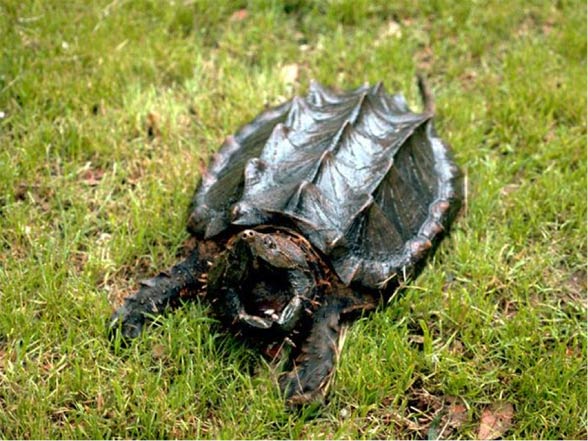
Carapace
An adult turtle’s carapace measures from 35 to 80.8 cm (14 to 32 in), with body weight ranging from 13 to 80 kg (29 to 176 lb); males are usually larger than females. The gender may be recognized only in case of adult reptiles (carapace length over 30cm) and it is denominated based on the cloaca location and the thickness of the base of the turtle’s tail. For males, the cloaca extends beyond the carapace edge, which makes it perfectly fitting the female, which cloaca may be closer to plastron. The base of a male’s tail is thicker, as it covers the reproductive organs.
A ‘worm’ on the tip of the tongue
Inside the mouth, on the tip of the turtle’s tongue there is a light red appendage that looks like a worm, which role is to lure fish – it is a form of so called aggressive mimicry – the predator’s body part resembles e.g. food of its victims. The turtle hunts by laying still in the water, opening its jaws wide. Then, the appendage starts to move like a worm, luring fish directly inside the turtle’s mouth. When the victim swims inside, the jaws clench instantaneously.
For anglers this is no news as they have been using worms as bait for a long time, yet perhaps few are aware of the fact that turtles may use the same technique 🙂

Bite force
Contrary to a popular opinion that the alligator snapping turtle has the strongest bite force in the animal kingdom it occurs that its maximum bite force reaches only 1730 N (176 kg [388 lb] of force), which means that it is second to several other turtle species. Still, an alligator snapping turtle should be treated with serious caution, as it is potentially very dangerous. The clench of its jaws can break the broom’s shaft or even, as it has occurred, human fingers…
As o consolation, there are no reports of an alligator snapping turtle attack that resulted in human death. Well, quickly moving and suddenly attacking turtles remain in the realm of comic books and movies 🙂
Diet
The alligator snapping turtle is an opportunistic predator that eats almost exclusively meat. Its diet is based on self-acquired prey and carrion. In this aspect it is similar to crocodiles – it catches whatever swims by.
Usually it eats live and dead fish thrown out by fishermen. It also chooses mollusks, carrion, amphibians, snakes, crayfish, birds, water vegetation and other turtles. If opportune situation occurs it can hunt for a muskrat or a nutria; it can also catch medium-sized mammals such as opossums, squirrels, raccoons or armadillos that approached the water.
Most likely it normally hunts at night, yet it can also be active during the day. Young turtles are more passive hunters, as they do not need as much food as the adults, which hunt more actively to satisfy their larger appetites. The turtle does not eat on a regular basis, yet it is a strong and dangerous predator – there is a documented case of this reptile killing and eating a small American alligator (hence the name, presumably).
In captivity it consumes almost every type of meat, including beef, poultry and pork. In extreme temperatures it refrains from eating at all.
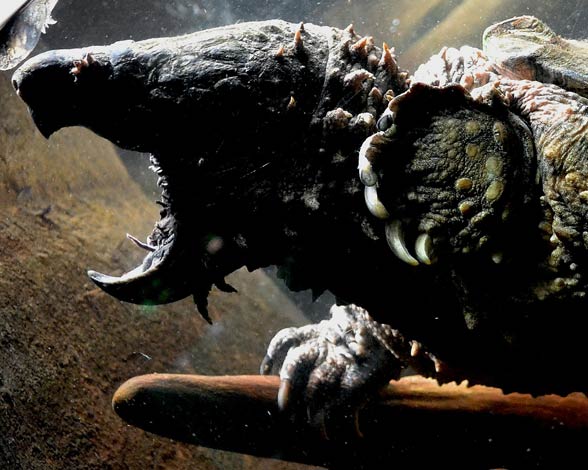
Breeding
It leads a solitary lifestyle, interacting with other turtles in early spring (Florida) or right before summer (Mississippi Valley), laying eggs 2 months later. The nests are dug at least 50 m (164 ft) from water to avoid flooding and drowning of the offspring. One hatch consists of from 8 to 52 eggs. Incubation lasts for 100-140 days, which means the majority of babies are hatched between September and October.
Temperature defines the gender
As for other reptiles, the gender of alligator snapping turtles is determined by the temperature during their incubation – at low and high temperatures more females are hatched, whereas at moderate temperatures there are more males.
They reach sexual maturity between 11 and 13 years of age, living up to 20 – 70 years in captivity. There is no information on their lifespan in the wild, however it is estimated that an alligator snapping turtle may live up to 200 years, yet a more realistic version is that it lives for 80 – 120 years.
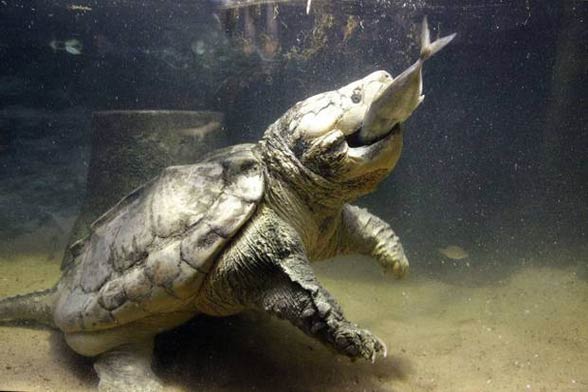
Lack of natural enemies besides… humans
Adult turtles do not have natural enemies apart from humans, which hunt them for meat and extraordinary carapaces which are then sold on the black market. The population is shrinking due to intensive hunting and loss of habitats. A very serious situation forced the US government to extend the species protective measures in most of these reptiles’ habitats, but the species remains classified as threatened.
Detailed characteristic / size
Alligator snapping turtle (Macrochelys temminckii)
- Body length: 79 – 101 cm (31 – 39.8 in)
- Carapace length: 35 – 80.8 cm (13.8 – 31.8 in)
- Weight: females: 23 kg (50.7 lb) on average, males up to: 80 kg (176.4 lb), the heaviest confirmed records – 113 kg (249 lb) and 135 kg (298 lb)
- Bite force: 140 – 176 kgf (308 – 388 lb)
- Lifespan: 20 – 70 years in captivity, conceivably 80 – 120 years in the wild

Alligator snapping turtle – interesting facts
- The alligator snapping turtle is the largest freshwater turtle in terms of weight and is one of the biggest turtles in the world.
- There is an rumor about a specimen weighing 183 kg (403.4 lb). The giant was allegedly found in Kansas in 1937.
- Other freshwater turtles of similar size include the exotic Chitra, Rafetus and Pelochelys
- An analysis conducted in Louisiana showed that 79.8% of the turtle’s stomach was… other turtles.
- The alligator snapping turtle may remain underwater for 40 – 50 minutes holding its breath.
- Observations indicate that turtles help themselves in thermoregulation through alteration of water reservoirs depending on the season – they prefer deeper waters in winter, while they move towards shallow areas in the first summer months.
